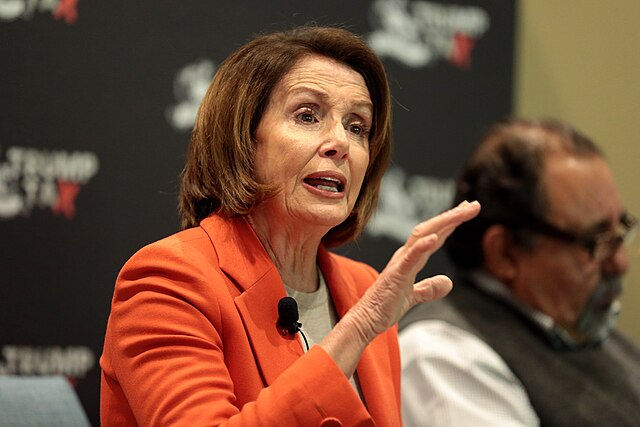The Modern Push for Unionization: A Working Class Movement or Just a Fad?
- Anderson Warshaw
- Mar 28, 2022
- 4 min read
From the first American worker strikes in 1768 to liberation for black workers during the Civil Rights movement, U.S. workers have used their collective bargaining powers to mold the norms of humans' most time-consuming waking activity: work. The expansion of protections for workers and human rights over the last century has decreased the modern relevance of unions. However, there is no denying the continuing role of worker solidarity in increasing and maintaining the base standard of living. Despite relative peace in the workplace compared to the life-or-death movements of the Gilded Age, there has been a fervent push for unionization. More than 60 Starbucks stores have recently organized unions despite anti-union sentiments from their corporate offices. So what has changed?
Unions: A (Very) Brief History
The first trade unions in the U.S. were created to protest wage reductions around the 19th century, within the memory of the Revolutionary War. By the mid 19th century, a growing need for skilled and unskilled labor began to slowly bring women and minority groups into the rapidly growing unionized labor force despite rampant discrimination. At the height of the Gilded Age, these workers faced inhumane working conditions dictated by a few monopoly families, who held enormous amounts of wealth and capital. After years of mass struggle and death, the Clayton Antitrust Act of 1914 was passed, legalizing strikes and ending the Gilded Age. Ever since the National Labor Relations Act in 1935, a result of similar Depression-era strikes, employers are required to bargain with any organized union of employees if the employees elect to form one.
Modern Populism and the Labor Movement
Though those century-old legislative victories remain, law, policy stagnation, and failure to react to negative trends have sown the roots for a new labor movement. The 21st century has been characterized by a rise in populism, a lofty ideal that prioritizes ordinary people in a struggle against elites, usually economic or political. Populism is not an ideological movement: despite stark policy differences, both Bernie Sanders and Donald Trump have recently utilized the narrative of the typical person rising against those with institutional power. Nevertheless, the idea of everyday workers forming a union is generally populist. Economic insecurity is one of the primary factors correlated with rises in populism. Between 50% and 75% of working people in this country live paycheck to paycheck, with 40% not being able to afford a $400 emergency. Since 1979, the average worker's productivity has increased at 3.5 times the rate of their wages. These factors combined with increasing income inequality show that workers are losing their ability to advocate for themselves effectively regardless of moral judgments on this data. Union membership correlates with this trend, which decreased from 20.1% in 1983 to 10.8% in 2020. These data show increasingly dire circumstances for working people that seem to have created an inflection point in the working world.
The Current Labor Battle
The COVID-19 pandemic has exacerbated economic inequality, and the ensuing labor shortage has inspired people to re-evaluate their relationship with work. Though year-over-year union membership increased in 2020 (to 10.8% from 10.3% in 2019) for just the third time since 1983, there has been vehement pushback from many of the companies whose workers desire a voice. Starbucks coffee shops have been the most recent battlefield of this reorganization, with over 60 locations across the country petitioning to unionize. This wave started in December at a store in Buffalo, NY, where employees voted to become the first Starbucks workers to unionize in the hope of achieving a 25 dollar minimum wage for their baristas. Starbucks, the world's largest coffee shop chain, is openly anti-unionization and has been accused of various union-busting tactics. Evidence of these claims includes mandatory, invasive meetings and text messages and the shutting down of a store that had just signed union authorization cards. Most recently, the Starbucks Corp. union filed a federal complaint that seven employees were fired without just cause. These shows of power by Starbucks might seem out of the norm, but that is not necessarily true. Of all union elections in 2016 and 2017, the Economic Policy Institute found that companies were charged with violating federal law in a staggering 41.5% of union campaigns. With union approval at 68%, the highest since 1965, corporations seem to be a significant force acting against the newfound populist will of the working class.
Where Do We Go From Here?
Regardless of individual value judgments on arguments for or against the goals of unionizing workers, the ability to form a union is a legal right. In the case of extralegal corporate intervention in union efforts, the best historical defense has been government legislation providing protection to workers. A very relevant piece of the proposed legislation is the Protecting the Right to Organize Act of 2021 (PRO Act), which aims to crack down on union-busting efforts by expanding both who are covered by fair labor standards and the legal ability of labor organizations to encourage strikes, among other provisions. Advocates say that customers can support Starbucks workers in their efforts by showing support in stores through tipping or kind notes and not crossing the picket line when strikes are organized. Though COVID-19 may have been the historical event that unmasked growing income inequality and the slow erosion of workers' power, these underlying themes are far from a new development of modern life in the United States. The systemic roots of this modern labor movement are deep. Given how historically resistant labor movements have been to discrimination, failure, or even mass casualty events, there is no reason to expect that the collective action of Starbucks baristas, or workers at large, is merely temporary.






Comments